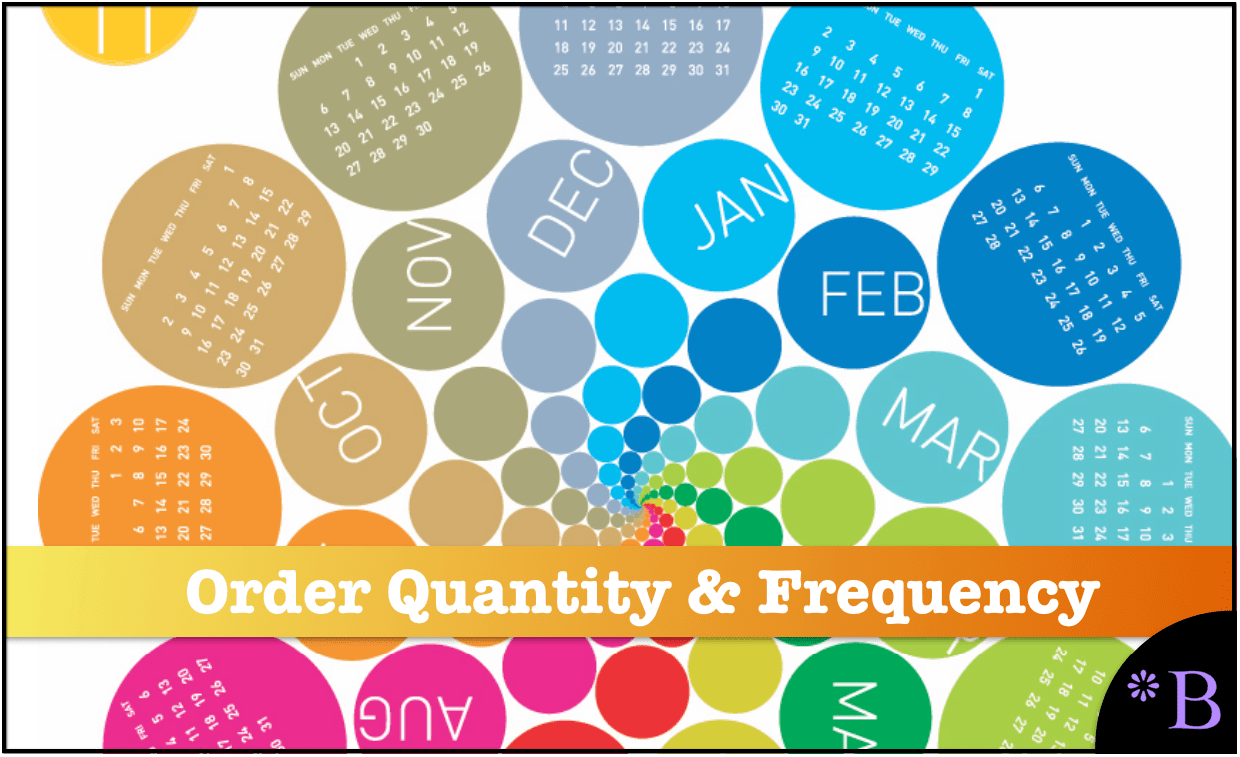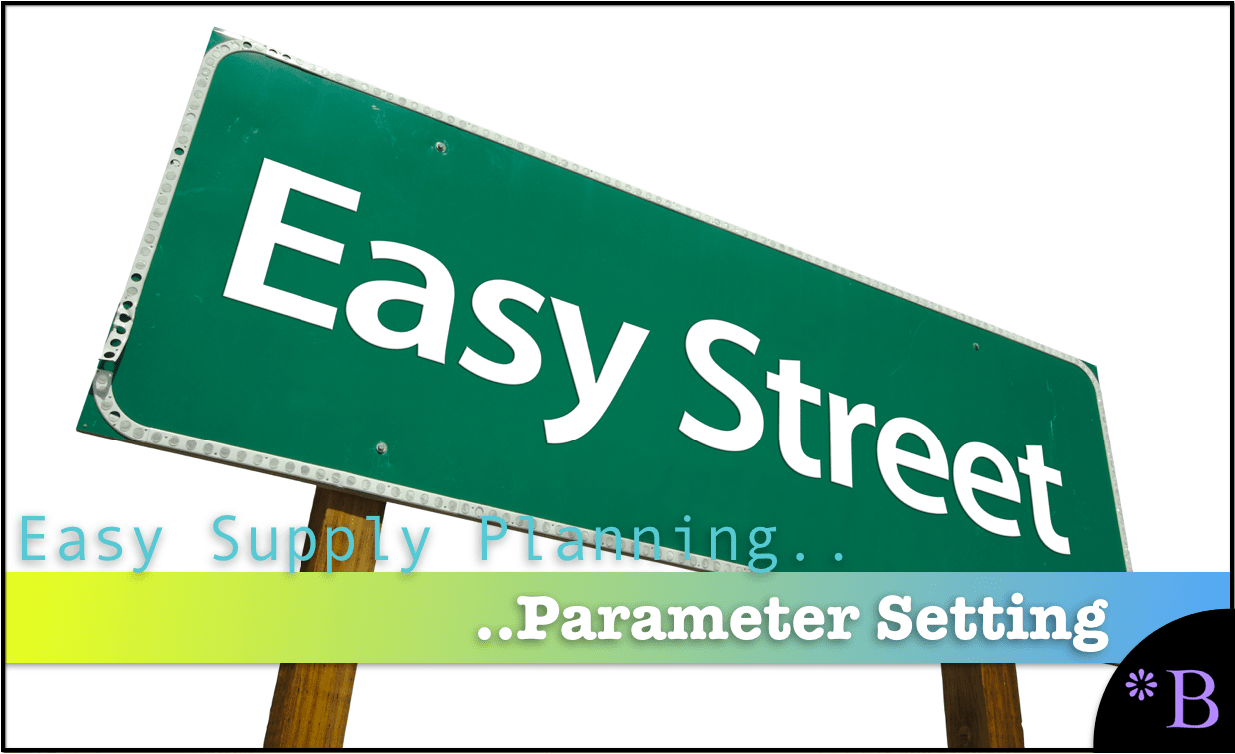How to Best Figure Out Ordering Quantity and Ordering Frequency
Executive Summary
- Ordering quantities are often the focus of supply chain planning as they directly impact the frequency with which things are done.
- We cover determining ordering quantities.

Introduction
While not often discussed, ordering frequency is linked to all other subjects frequently discussed in supply chain planning. Order frequency can be viewed as the inverse of order frequency. Every order quantity is also a type of order frequency, so when you set an order quantity, you also set an order frequency. The higher the order quantity, given the same demand, the lower the order frequency. You will learn about the relationship of order frequency with other vital supply chain planning concepts.
Our References for This Article
If you want to see our references for this article and related Brightwork articles, see this link.
History of Forecast Error and Lead Time Variability
| Jan | Feb | Mar | Apr | May | Average Error | Average Error for Safety Stock Purposes | |
|---|---|---|---|---|---|---|---|
| Lead Time Variabiltiy | 5% | -15% | 0 | -10% | 25% | 7.4% | -5% |
| Forecast Error History | 20% | -25% | +15% | +10% | -3% | 14.6% | -5.6% |
- The error is much smaller when we do not consider errors that do not pull from stock.
- We will increase our starting stock level for this, which is -5.6% + -5% = -10%, or 10%.
The safety stock here is not statistically calculated in this scenario. Instead, it is a mean error — or a service level at precisely the 50th percentile. This means we need to add the twin variabilities that sum up to 10%.
This is how much we have to increase in stock. The stock is required to cover the possibility that the supply is late and the forecast is in error. If both events do not occur, we will have carried excess stock.
The next question is, what should this increase be calculated over?
There are two options:
- Lead Time Demand
- Demand Between Replenishments
Let us discuss each in detail using a scenario.
How to Understand Lead Time Demand
The standard answer is that the bump in stock should be over lead time demand.
If the order frequency is once every three months — but the lead time is two weeks. Enough safety stock is necessary to cover the two-week lead time. If demand spiked, we could place an order before the next regular order date.
Let us review the following math associated with this scenario.
- If the lead time is two weeks, the average monthly demand is (roughly) 250. Therefore, 250 units are one part of the formula.
- The 50th percentile sums to 10%.
- Therefore, 10% should be multiplied by 1/2 * 250 or 125.
- This brings a safety stock of 12.5.
Demand Between Replenishments
The EOQ was already calculated, and it was determined that this product at this location should be ordered once every three months. With a 1/2 month replenishment time, the flexibility does exist to keep a little safety stock. Still, it is only by taking on a risk that the order will have to be placed on the next standard order date or reorder date, and that is less economical.
- To enforce the EOQ, the 10% increase would be applied to the three-month demand of 750 units, bringing the safety stock to 75 units.
- Because the safety stock is 75 units, the plan is for 75 units to be carried throughout the duration, and therefore, this bumps up the ending inventory of each month by 75 units.
Now, we are ready to make the safety stock statistical, which means using a service level.
Scenario 3: Forecast Error and Supply Variability + Service Level
Scenario 2 would only offer the appropriate safety stock for up to 50% of cases or the 50th percentile on a standard distribution curve. However, in most cases, companies have a service level, which means moving up the distribution curve, which gets more expensive. 95% is a common service goal, so let us apply this service level to our safety stock.
This will mean converting 95% to an inverse value — which happens to be 1.644.
- So now we take the 75 units and multiply them by 1.644, which yields 123.3.
- Because our error is a composite value of both demand and supply variability, this safety stock level should cover us for 95% of the scenarios.
How Should EOQ and Other Supply Planning Parameters be Calculated?
One would be able to, for example:
Item #1: Simulation
Set the supply planning parameters in a way that one can simulate the impact on the overall supply plan. When using supply planning systems, inventory parameters are typically managed on a "one by one" basis. This leads to individual planners entering values without considering how inventory parameters are set across the supply network.
Item #2: Interactivity of Changes
This is the ability to see the relationship between changes to service levels and the simulated output.
Item #3: Seeing Financial Implications
This is the ability to see the impact on the dollarized inventory for different aggregate settings.
Item #4: Mass Change for Efficient Maintenance
This allow the parameters to be changed en mass or as a mass change function. Both supply planning systems are designed to receive parameters; they are not designed to develop the parameters.
 Getting to a Better Parameter Setting Capability
Getting to a Better Parameter Setting Capability
We developed an approach where EOQ and reorder points are calculated externally, which allows for a higher degree of control. And for the average inventory to be coestimated in a way that provides an observable total system inventory, holding cost, service level, and a picture of what is happening to the overall system. Calculating individual parameters like EOQ without an appreciation for the systemwide does not make any sense. Also, in many, perhaps even most cases, there is no reason to use EOQ for the purposes given above. Instead, an alternative custom order batching method can be created to replace EOQ. There is nothing magical about EOQ. It is not a "best practice." It will not provide you with "digital transformation." It is not "Six Sigma." You will not get a "black belt" for using it.
After observing ineffective and non-comparative supply planning parameter setting at so many companies, we developed, in part, a purpose-built supply planning parameter calculation application called the Brightwork Explorer to meet these requirements.
Few companies will ever use our Brightwork Explorer or have us use it for them. However, the lessons from the approach followed in requirements development for supply planning parameter maintenance are important for anyone who wants to improve order batching and supply parameters.
Conclusion
This article showed the trade-offs on order frequency, order quantity (EOQ), and safety stock. The order frequency is as important as the order quantity. The order frequency is the order’s timing, and the order frequency accuracy can be tested and checked historically.
This article used statistical safety stock, but not the standard formula — because we prefer our own, as explained in the following link.
Also, learn about the limitations of EOQ at this link.